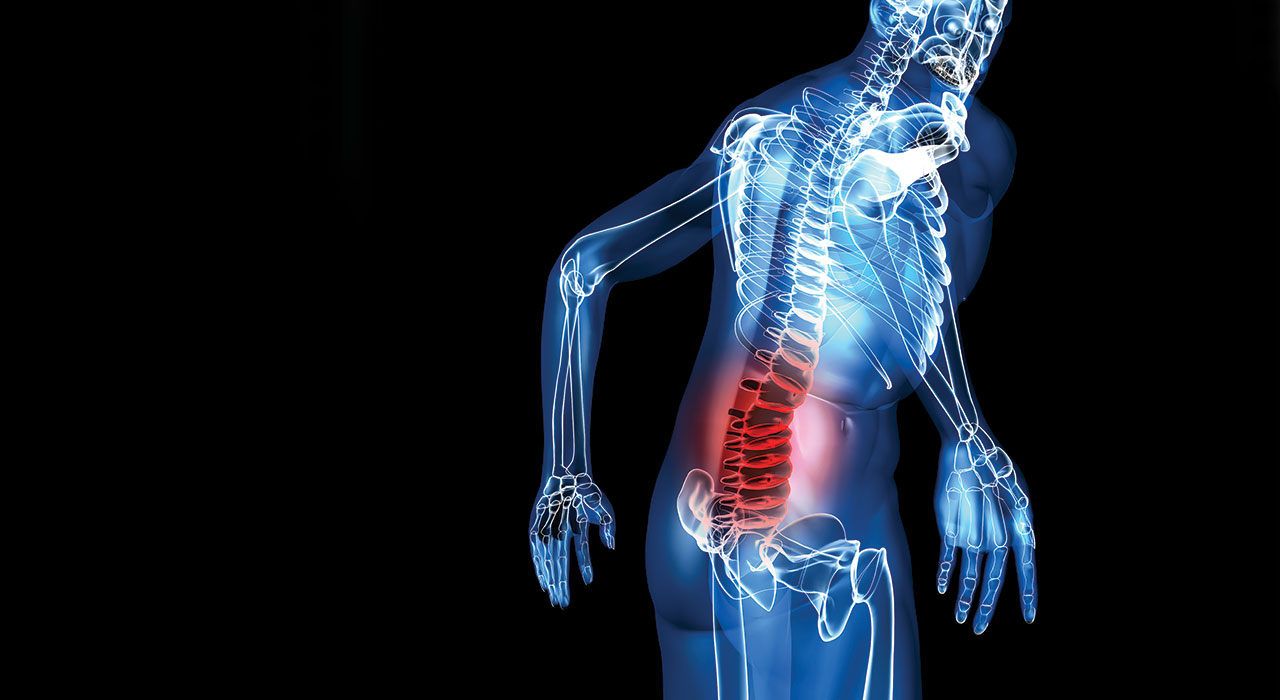Keep your lower back strong and tweak-free when you’re attacking your WOD by avoiding these common mistakes
Overtraining
Don’t try to do too much too soon. People don’t always realise their body needs time to adapt when they start any form of new training. Starting slow is essential and will help avoid injuries. We also have to remember that most people have a sedentary lifestyle and starting exercise is putting their bodies outside their comfort zone. It is always best to start slow if you are new to the gym, as your muscles are still developing and getting used to the new exercises. If you are overexerting your muscles too soon, either with weights that are too heavy or pushing yourself too hard with cardio, then you are likely to damage your connective tissues.
Not training hard enough
There really is a sweet spot when it comes to working out; while training too much can lead to injury, not putting enough energy into your workouts will not yield results. While you should enjoy your workouts, in order to achieve the real sense of fulfilment that comes after vigorous exercise, you should still be pushing yourself. Try to step your workout up a notch every time you go to the gym, whether it be one more rep or an extra kilo of weight. Just remember if something doesn’t feel right, or you are feeling particular discomfort, it is best to stop so that you can prevent injury.
Following the crowd
We all have different body types and abilities and as such, certain workouts may not be right for you. For example, if you know you lack flexibility and want to work on that, it would probably be more beneficial to attend a yoga class than attending several HIIT classes per week. While this may sound obvious, not exercising to match your goals could be causing injury.
Copying the workouts of others could be detrimental, especially if the person that you are imitating does not have a good technique. This can lead to injury, and prevent any actual development in your strength and ability.
Doing extra sessions for the “glamour” muscles
Disproportionate workout time devoted to the mirror muscles – such as biceps, chest and glutes – leaves some of the smaller muscle groups, including shoulders, knees and hips, ignored. This can have a negative effect on your overall workout as they could become less able to support the other muscle groups as they get stronger.
If these smaller muscles become overloaded by your workouts, they may not be able to perform optimally, resulting in injury and potentially leading to you needing some time away from exercise to recover.
Failure to prepare before and after
Warming up should be part of your training session. It prepares the joints, the muscles and the tendons and reduces the risks of injuries. A few minutes of cardio should be sufficient to allow the body to be ready to exercise but stretching out your muscles before doing anything is always vital. Similarly, you should ensure you cool down. This will prevent the build-up of lactic acid which can cause cramping and discomfort. It will gradually bring your body back to its normal resting temperature and heart rate so there is no sudden reduction that can leave you feeling faint.
Only stretching at the start of a workout
Stretching is an essential part of exercising in order to keep a good flexibility. Whenever someone does not stretch properly before, after or even during exercise, this could reduce the joint’s range of motion and set in place premature joint degeneration. You could work yoga and Pilates into your weekly training plan – not only will they relax you, but they will ensure that you get a good stretch on a weekly basis.
The wrong gear
Proper trainers can make or break your workout as they are essential for absorbing the shock and increasing your range of movement. You should also ensure what you are wearing is right for the workout you are doing that day, for example running and gym trainers are designed differently to prevent injury. Running trainers are designed to have more cushioning and support, meaning when you are running on the hard pavement, the impact is softer on your joints preventing injury. Whereas gym trainers allow for a wider range of movement in all directions so you can comfortably and safely exercise. Similarly, there are also different wearable supports available so that your workout is more comfortable and safe. For example, back supports allow for squats and deadlift exercises to put far less strain on your back.
EXPERT: Dr Christian Allard DC, Clinic Director of the UK’s leading clinic for back pain, ProBack







